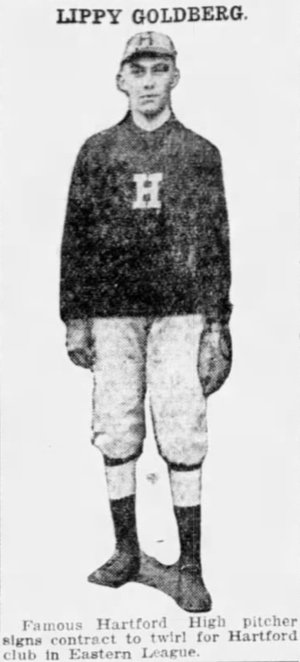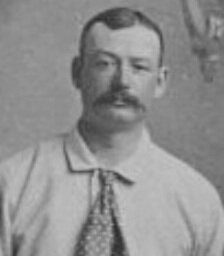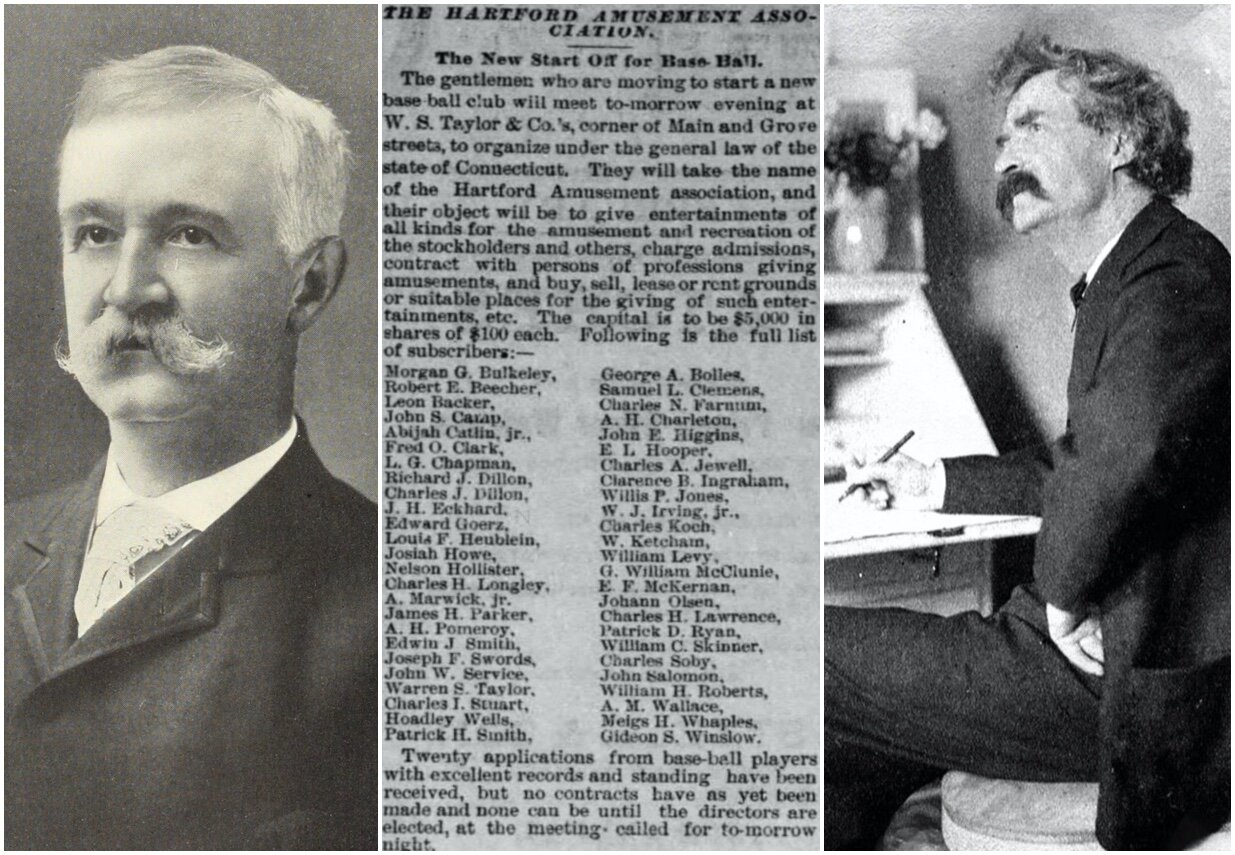More than a century before the Yard Goats brought us Dunkin’ Park, there was another minor league field known as Hartford Base Ball Park. Also called Wethersfield Avenue Grounds, the park was built in 1896 by shareholders of the Hartford Baseball Club. They were led by the team’s new owner and manager, William “Bald Billy” Barnie, a former outfielder of the original Hartford Dark Blues. As a new entry into the 1896 Atlantic League, Barnie revived professional baseball in the city after a brief absence and earned widespread admiration for his efforts.

For the new field, Bald Billy secured a plot of land on the west side of Wethersfield Avenue near Hanmer Street. The 150-foot by 20-foot grandstand, made of wood and steel, could accommodate 1,500 spectators, with tickets priced at 15 cents. A press box was built atop the grandstand for journalists covering the games. While construction was underway, the Hartford club prepared for their season by practicing with the Trinity College team at their grounds. The new ballpark was finished in time for a home opener on April 23, 1896, and Hartford dominated New Haven with a decisive 7-1 victory.

Along with their new digs, Hartford’s season was both attention-grabbing and controversial. Barnie’s team, sometimes called the Hartford Bluebirds, featured a powerful outfielder and hometown hero, John Gunshanan. They were captained by Bob Pettit, a 34 year old utility player from Williamstown, Massachusetts. Key contributors like John Thornton and Reddy Mack helped propel the Bluebirds into a tight pennant race with Newark. They made a final push for Atlantic League supremacy and ended with a 73-57 win-loss record.

However when Newark finished in first place, Hartford protested the decision. Manager Barnie argued that Newark’s record was unfairly inflated due to a dozen extra games played. Newark also used a suspended pitcher named Joseph Frye who had left Hartford midseason. As a result, the second place Bluebirds challenged Newark to a 7-game series dubbed the Soby Cup sponsored by Charles Soby. Newark declined the invitation, but third place Paterson accepted, and Paterson won the Soby Cup.

By November of 1896, the matter was put to rest by Sam Crane, President of the Atlantic League, who declared Newark as champions. The most devoted of Hartford fans felt cheated out their first pennant and local news was about to get worse. After the season, it was announced that Barnie sold the team to another group of investors because he was hired as manager for his hometown Brooklyn Bridegrooms of the National League.

“I was euchred out of the pennant.”
Billy Barnie
Barnie returned as Hartford’s manager a few years later but unexpectedly died during the 1900 season. Condolences and words of support for Barnie poured into Hartford from across the baseball world. He was buried alongside other baseball greats in Green-Wood Cemetery, Brooklyn, New York. Hartford fans remembered him fondly, and the ball club finally won a minor league pennant at Hartford Base Ball Park in 1909. The venue later became Clarkin Stadium and then Bulkeley Stadium.
Sources
- Hartford Courant database on Newspapers.com
- Vaccaro, Frank. “Billy Barnie: Baseball Titan.” Medium, 14 Jan. 2020, medium.com/@infofrankvaccaro/billy-barnie-baseball-titan-1c8c9560f50f.




































































































































































































































































































































































































































